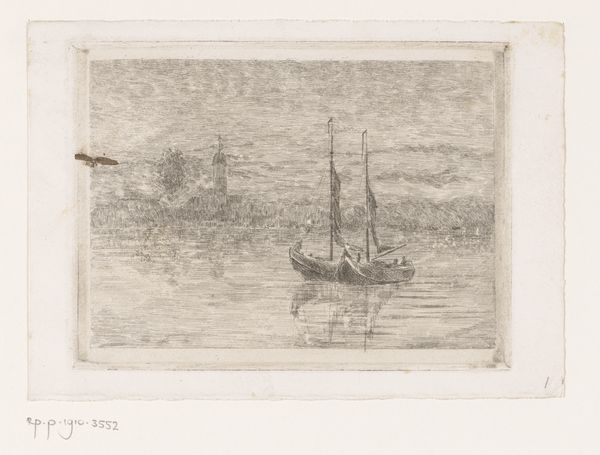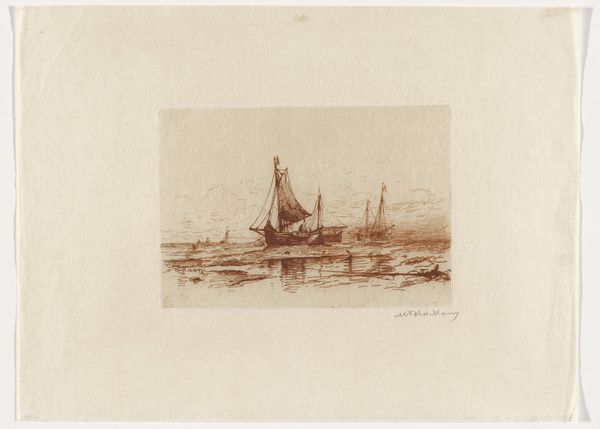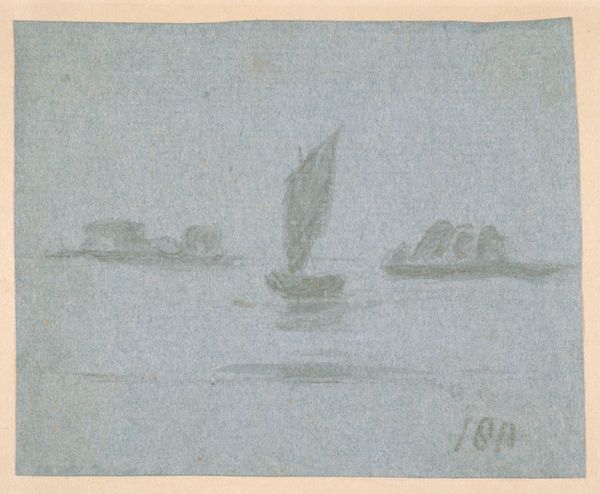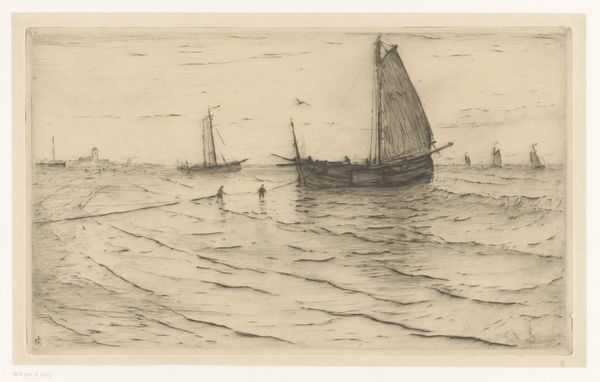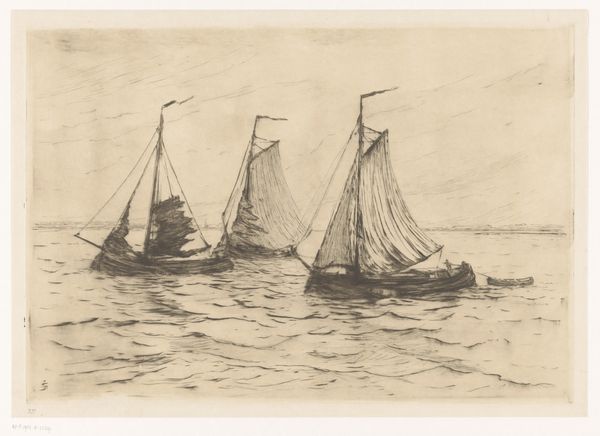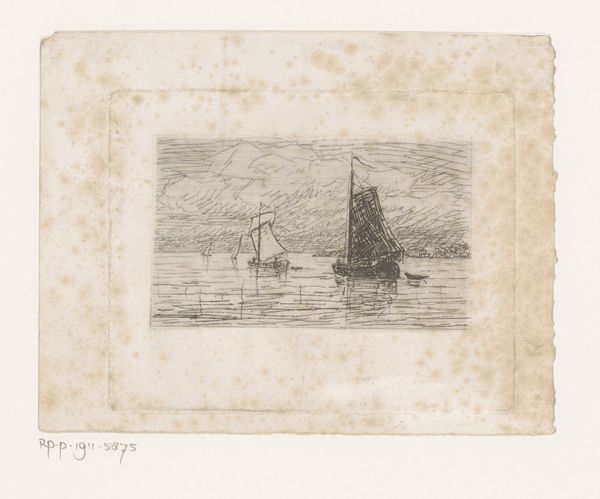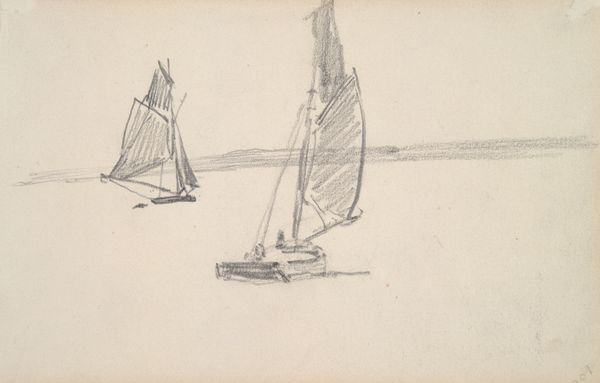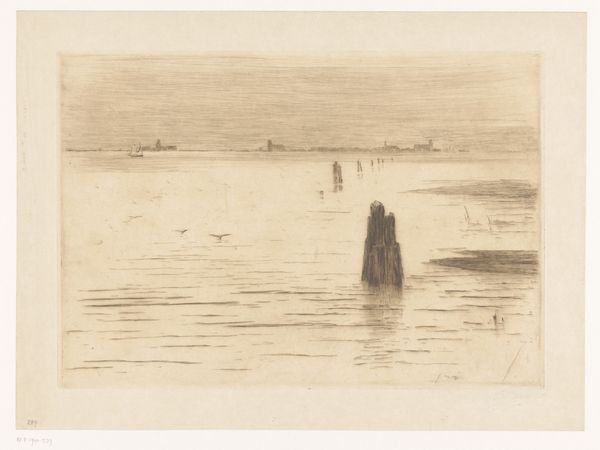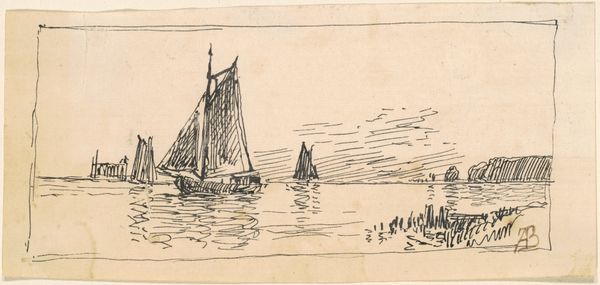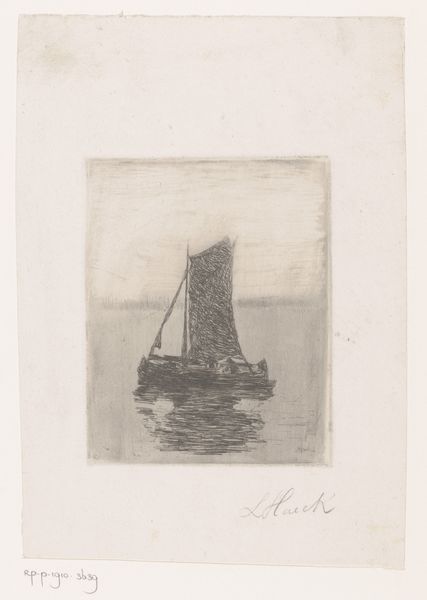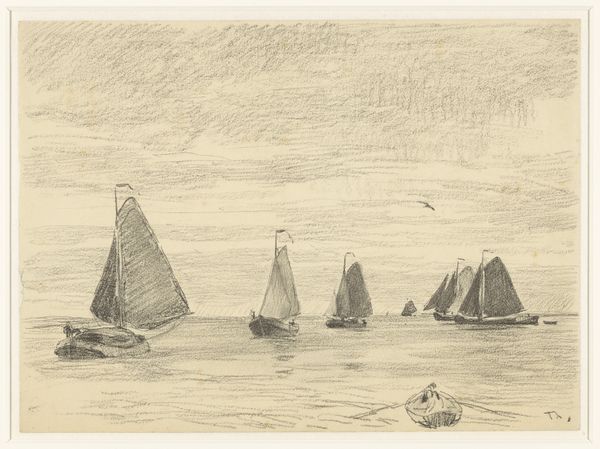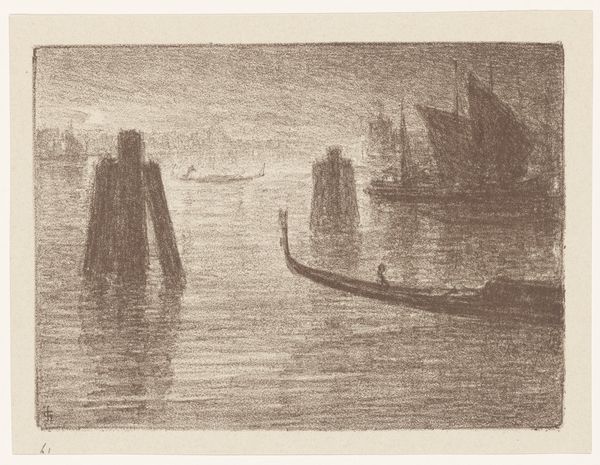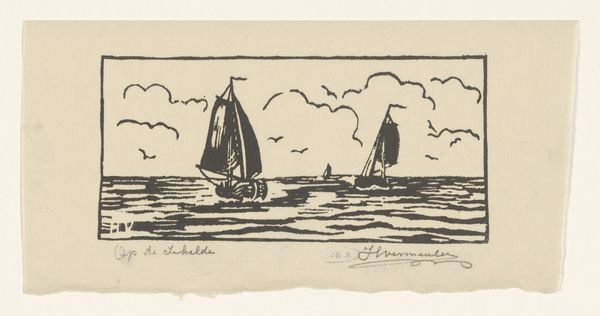
Dimensions: 92 mm (height) x 142 mm (width) (bladmaal)
Editor: So, here we have "Isbjerge" by Jakob Danielsen, created sometime between 1888 and 1938 using watercolor and colored pencil. It's…quiet, almost austere in its simplicity. What do you see in this piece, looking at its composition? Curator: Immediately, the near monochrome palette strikes me. Note how the tonal range is tightly controlled. The artist coaxes out form and depth not through hue, but through subtle modulations of value, of light and shadow. Observe the structure; how the composition employs a horizontal emphasis, yet is punctuated by the verticality of the icebergs themselves. A very controlled and precise composition, would you agree? Editor: Absolutely, there is a certain order and simplicity here. It’s interesting that such an arctic subject has a warmer, almost sepia tone to it overall. How would you interpret this use of color formally, then? Curator: The warm wash over the landscape creates an interesting tension. It neutralizes any potential for vivid color contrast, placing the emphasis on the underlying geometric structure of the forms. The artist has deliberately chosen to flatten the space, drawing our attention not to realism but to the painted surface itself. We might view the structure here as the artist emphasizing an emotional impact with color choices rather than representing the real-world icy, arctic setting we may expect. The structure highlights his tonal intent, don't you think? Editor: I see what you mean, focusing on form and construction more than the literal subject, is how the mood is portrayed. Thank you! Curator: Indeed, and by looking at art this way we notice formal approaches instead of automatically reaching for assumed cultural or emotional ones. A great point to end on.
Comments
No comments
Be the first to comment and join the conversation on the ultimate creative platform.
